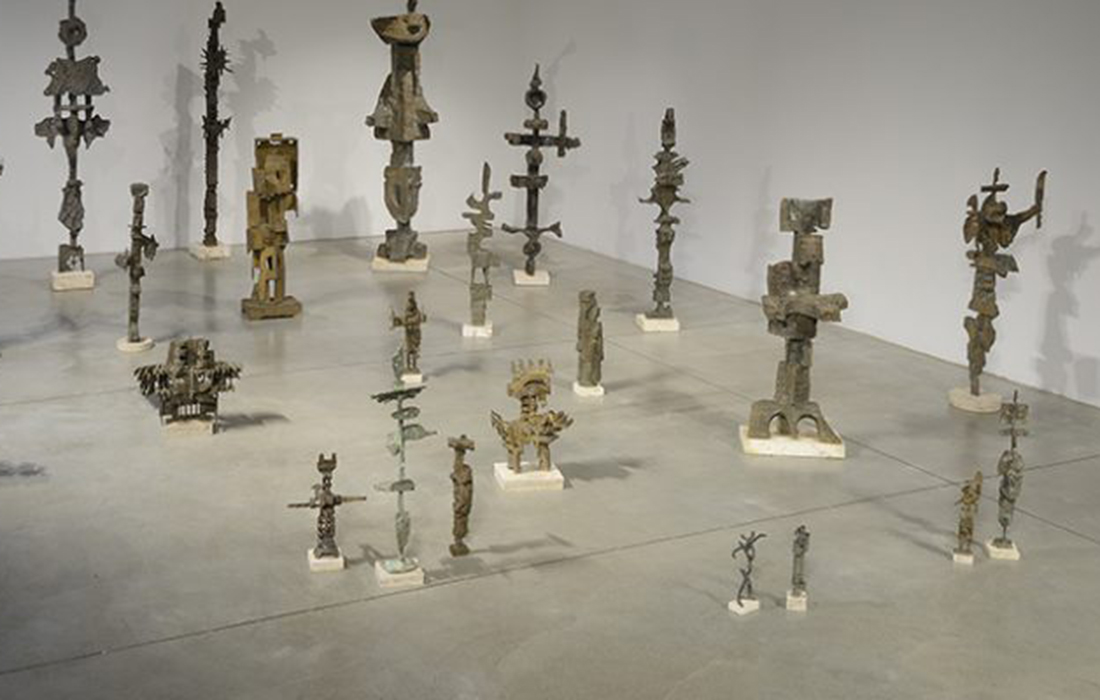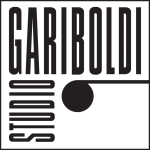October – December 2017
Studio Gariboldi is pleased to present a retrospective exhibition dedicated to Mirko Basaldella (1910-1969), displaying an important selection of bronze sculptures created in the 1950s and 1960s.
From an early age Mirko learned how to whittle wood together with his brothers Dino and Afro at his uncle’s shop in Udine. He studied in Venice, Florence and then in Monza, where he met Arturo Martini, an Italian master who would guide him for several years. In 1933 he moved to Rome and set up a studio with his good friend Corrado Cagli, whose sister Serena he later married. Mirko’s revelation to the art world occurred during the Roman Quadrennial of 1935 (in 1966 he would win the first prize) where he displayed a selection of sculptures. It would be, however, his first solo show at the Galleria della Cometa that gave full measure to a new and important presence in the world of Italian sculpture.
After WWII, Mirko created numerous monumental works in Rome, La Spezia, Mauthausen, Urbana (Illinois) and in Arlington and Cambridge (Massachussetts). In 1952 and 1954 he participated to the Venice Biennale, and in 1955, won the first International Prize for Sculpture at the San Paolo Biennale. From 1957, Mirko lived mainly in the United States, in Cambridge, where he became Head of the Design Workshop at Harvard University and later, was elected member of the American Academy of Arts and Sciences.
Throughout his life and until his last days, he never ceased his research in sculpture, painting and teaching, as well as his active participation in exhibitions in museums and galleries around the world.
Mirko’s sculpture is strongly permeated with myths that are never recognizable or narrated, but rather, are recalled emotionally. His sculptures are a concentration of visceral force, stability, primordial expressiveness with an aim to reach the essence of things and human nature. Three-dimensional form thus becomes an emotional concentration and, transmitted to the spectator, it appears as a magical revelation.
Mirko’s work always focuses on the present, as it is the basis of its historicity. Its plastic idiom, like any expressed thought, has a logic all its own with deep roots in man’s consciousness: it expresses ideas, arouses feelings, reveals the life of things and men.
[…] Like words, forms acquire a meaning born of the special feeling they evoke; forms are organized into schemes and systems and they derive their power from a common emotive potential. Thought does not need to be expressed in words because it is determined by lines and surfaces, by contrasts of forms, by strident or sweet harmonies, by contrapunctal developments, by precipitations and reconciliations. Plenitude and void become dominant motifs like good and evil, black and white, the conscious and the subconscious. […]
The realization of recent scientific achievements gives a spacial character to the poetry of our time; it sheds light upon unknown worlds and paves the way for new investigations […]
(from: Mirko Basaldella, The New Decade, 22 European Painters and Sculptors, Museum of Modern Art, New York, 1955 pp.94)



